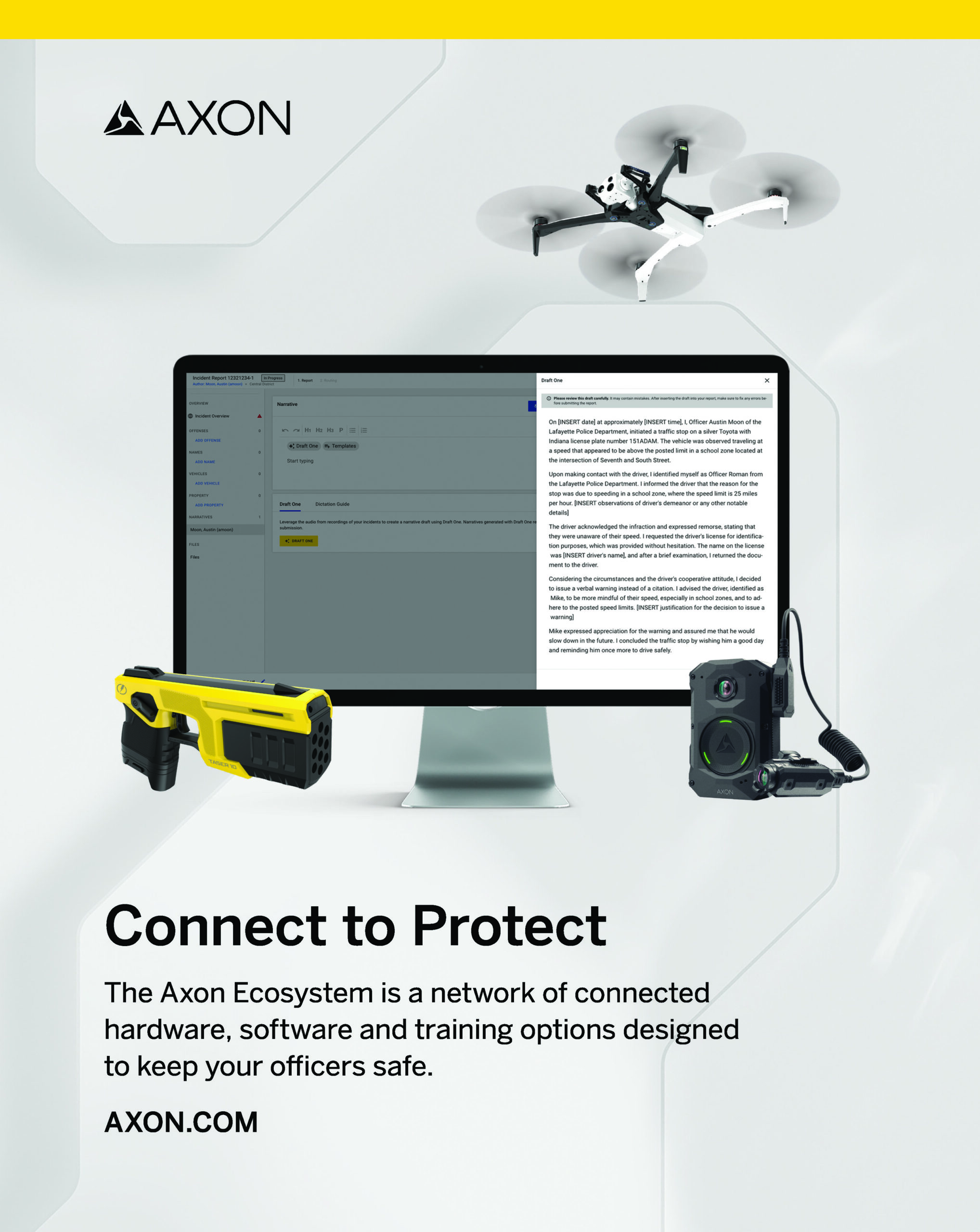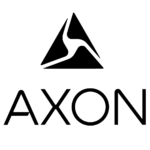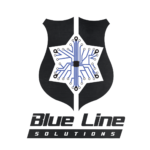
Advertorial
SPRING | 2025
Five Major Developments in U.S. Law Enforcement to Watch in 2025 – Axon
Advertorial
Spring | 2025
Five Major Developments in U.S. Law Enforcement to Watch in 2025 – Axon

The law enforcement landscape across the United States is rapidly evolving. In 2025, even more change is on the horizon—from cutting-edge technology to police-community initiatives. Below, we explore five major developments shaping the future of public safety across the country.
- Advancements in Real-Time Response
Cloud-based real-time crime center (RTCC) platforms like Axon Fusus are setting a new standard for effective, real-time response in law enforcement. With Axon Fusus, agencies can aggregate video streams from public and private cameras into a unified platform, enhancing situational awareness and enabling rapid decision-making during critical incidents.
Early adopters of Axon Fusus have reported improved emergency response times and safer outcomes for both officers and communities. Because Axon Fusus is technology-agnostic, it integrates with all major public safety technology assets, including Axon Air DFR. These integrations are invaluable for agencies’ real-time response capabilities.
Axon Air DFR provides RTCCs with live aerial views of critical incidents, allowing dispatch and command staff to make more informed decisions as situations develop in the field. Axon’s one-click drone request feature, coming later this year, will allow officers and operators to quickly dispatch DFR drones with pinpoint accuracy to an officer’s real-time location, providing immediate aerial support.
As integrations between cloud-based RTCCs like Axon Fusus and other public safety tools continue to advance, agencies will gain an increasingly comprehensive view of unfolding incidents—enhancing safety, efficiency, and decision-making in real time.
- Evolving Drone Policies
As drone hardware and software continue to advance, foreign-made drones are increasingly seen as a national security risk. The U.S. government—through legislation such as the Fiscal Year 2025 National Defense Authorization Act (FY25 NDAA)—has begun imposing stricter regulations on foreign-made drone technology. For agencies that rely on foreign-made drone hardware and software, there is a risk their fleets could be grounded due to new regulations in the coming years.
To address this concern, Axon launched the Axon SkySwap Program, a drone trade-in program designed to help U.S. law enforcement agencies transition to compliant drone hardware.
SkySwap allows public safety agencies to trade in non-compliant drones for credit toward new, secure, NDAA-compliant Axon Air DFR technology, such as the Skydio X10, a next-generation autonomous drone. These American-made autonomous drones allow agencies to fly “beyond visual line of sight” (BVLOS), expanding their response capabilities.
With SkySwap, agencies nationwide can future-proof their drone operations in 2025 to ensure their drone programs stay flying in an ever-changing regulatory landscape.
- Strengthening Police-Community Partnerships
As police agencies nationwide adopt more community policing strategies, many are also encouraging residents and businesses to take an active role in public safety through initiatives like Community Connect.
Community Connect, part of Axon Fusus, allows residents and businesses to voluntarily register their security cameras with local police. Registered cameras have played a critical role in solving crimes and deterring crime in communities across the nation.
As more jurisdictions adopt Community Connect, the program is expected to further strengthen trust and transparency between law enforcement and the public, creating a shared sense of responsibility and mutual respect. By expanding access to crime-solving tools and fostering collaboration, Community Connect is helping to build safer, more connected communities.
- Emergence of AI
Artificial intelligence is transforming industries across the U.S., and law enforcement is no exception. Axon AI helps officers work faster and more effectively, improving both emergency response and investigative work.
Axon AI allows agencies to automate redaction, reporting, and the transcription of video and audio files. These tools free up officers from administrative tasks, enabling them to focus more on responding to calls and conducting investigations.
Departments in Texas, Florida, and Washington have reported significant time savings thanks to Axon AI solutions. These solutions also help improve community relations. For instance, automated redaction has helped agencies expedite public records requests and streamline transparency efforts.
As AI continues to evolve, Axon AI is well-positioned to help U.S. law enforcement agencies streamline workflows and improve outcomes.
- Adoption of Counter-Drone Technology
The rise of drone technology has introduced new challenges to public safety. Unauthorized drone activity near critical infrastructure and public events poses a unique safety risk to communities. Dedrone’s counter-drone solutions help law enforcement agencies address these threats.
With Dedrone, agencies can detect, track, and jam unauthorized drones, improving airspace security. Dedrone has helped secure airspace during public events like football games and concerts and is increasingly used to enhance visibility in metro areas.
To explore the latest advancements in counter-drone technology, watch the webinar “Keeping Your Airspace Secure: An Introduction to Counter-Drone.”
The Power of Connected Systems in Public Safety
More and more, agencies are integrating their systems to enhance response times, improve outcomes, and strengthen community engagement.
From real-time crime centers to counter-drone technology, public safety agencies are moving swiftly toward a safer, more connected future.
To learn more about how your agency can leverage connected technology to protect more lives in more places, visit axon.com/industries/law-enforcement.
1 Citaton one goes here
2. Citation two goes here

David Blake

Duane Wolfe

Guler Arsal

Joel Suss
Lorem ipsum dolor sit amet, consectetur adipiscing elit. Ut elit tellus, luctus nec ullamcorper mattis, pulvinar dapibus leo.













